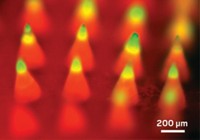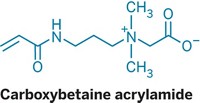Advertisement
Grab your lab coat. Let's get started
Welcome!
Welcome!
Create an account below to get 6 C&EN articles per month, receive newsletters and more - all free.
It seems this is your first time logging in online. Please enter the following information to continue.
As an ACS member you automatically get access to this site. All we need is few more details to create your reading experience.
Not you? Sign in with a different account.
Not you? Sign in with a different account.
ERROR 1
ERROR 1
ERROR 2
ERROR 2
ERROR 2
ERROR 2
ERROR 2
Password and Confirm password must match.
If you have an ACS member number, please enter it here so we can link this account to your membership. (optional)
ERROR 2
ACS values your privacy. By submitting your information, you are gaining access to C&EN and subscribing to our weekly newsletter. We use the information you provide to make your reading experience better, and we will never sell your data to third party members.
Pharmaceuticals
Antioxidant nanoparticles could treat sepsis
Ceria-zirconia nanoparticles combat reactive oxygen species and reduce inflammation
by Emma Hiolski
July 17, 2017
| A version of this story appeared in
Volume 95, Issue 29
Sepsis occurs when the body’s immune response to an infection spirals out of control. The inflammatory signals designed to kill bacteria and other invaders spread beyond the infection site and in the worst cases lead to organ failure and death. The only effective treatment for sepsis is antibiotics, but they target only the source of the infection, not its symptoms. To combat that inflammation, scientists at Seoul National University, led by Seung-Hoon Lee and Taeghwan Hyeon, synthesized ceria-zirconia nanoparticles to scavenge reactive oxygen species (ROS) that damage and kill cells. The cerium ion Ce3+ mimics natural catalysts that remove superoxide and hydroxyl radicals, so a high Ce3+:Ce4+ ratio in the particles is important for treating inflammation. Shifting to the +3 oxidation state is energetically unfavorable, however, so the researchers added Zr4+ ions to the nanoparticles to stabilize the Ce3+:Ce4+ ratio and improve their antioxidant capabilities over ceria-only nanoparticles (Angew. Chem. Int. Ed. 2017, DOI: 10.1002/anie.201704904). The team tested the ceria-zirconia nanoparticles in cell and animal models of inflammation and sepsis and discovered that the nanoparticles targeted inflammation, reduced ROS, and prolonged the survival of mice with sepsis with only a single, low dose. The authors note that the nanoparticles “have the potential as a therapeutic nanomedicine for treating ROS-related inflammatory diseases.”




Join the conversation
Contact the reporter
Submit a Letter to the Editor for publication
Engage with us on Twitter